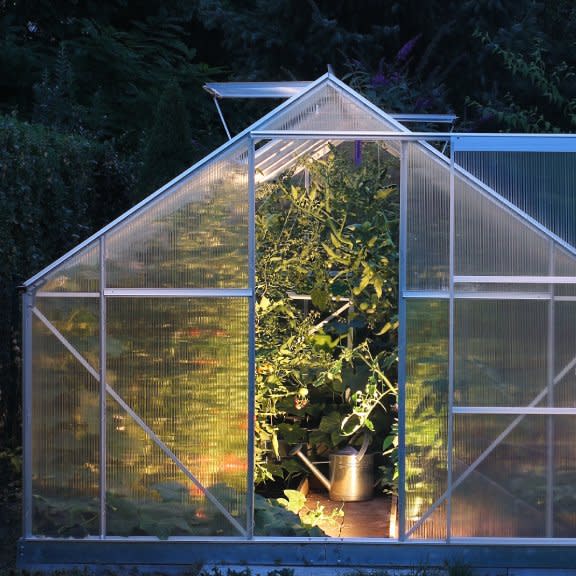Night Gardening: Why You Should Try Gardening After Dark

The concept of night gardening might seem impractical, but in super-hot regions, it may be the only option. And, there are several other good reasons for nighttime gardening. There are flora and fauna that can’t be observed during the daytime. There’s also the opportunity to catch some pests nibbling on your vegetables. Gardening in the dark may also be the only time of day you have free for such activity. And, the peaceful sounds of the evening could send a gardener into a dreamy state, perfect for bedtime.
What Is Night Gardening?
Choosing to garden after dark isn’t for everyone. But for some, it’s the only time they have to spend outdoors. Modern busy lifestyles often leave little extra time for simple pleasures. Gardening after dark may not only be the only time you have available, but it opens the senses to a whole different world. While we are unwinding and getting ready for bed, a host of animals and insects are just waking up. Even certain flowers that we can’t see in the daytime bloom only at night.
Benefits of Night Gardening
First and foremost is the peace. Nighttime is quieter than daytime. During the day construction work, traffic, children at play, and other noise distractions abound. In the evening, most of this is over and the music of insects takes over. Secondly, nighttime gardening can provide solitary time. Gardening alone in the soothing dim light gives time for reflection and discovery of one’s own thoughts. Or, in the case of a family, it can be a family activity, full of learning and discovery. For the organic gardener, gardening in the dark is an opportunity to hand-pick the pests that feed on cabbage and other edibles.
How to Try Night Gardening
Humans are not owls – our adaptation to low-light situations is limited. Therefore, the key to gardening after dark is light. The night garden can be further enhanced by landscape lighting, either wired or solar. Strategically placed lights can illuminate pathways and obstacles. If lighting isn’t available, consider a head lamp that will keep your hands free and brighten the sightline.
The best nighttime gardening tasks are quiet ones. Avoid mowing or edging in the night which can disturb the neighbors and shatter the peace. Instead, concentrate on simple tasks such as watering, light weeding, pest removal, and other easy chores. If there is sufficient light, transplanting or even pruning at night avoids the damaging heat from the day.
Best Plants for Night Gardening
The moon garden has been a popular concept for some time. It features plants that seem to glow in the light of the moon. Light colored plants stand out in moonlight. Those in soft pink, yellow, white, cream, and silver reflect moonlight and become bright. Plants that only bloom or release their scent at night are also popular choices.
Night blooming Jasmine
Night blooming Cereus
Moonflower
White New Guinea Impatiens
Angel Trumpet
Night Phlox
Evening Primrose
Nicotiana
Casa Blanca Lily
Tuberose
Gardenia
Bright foliage plants with variegated white and cream accents like certain Hosta, holly, or Caladium will further enhance the garden scheme.
Stay Safe While Night Gardening
Lighting is an important part of nighttime safety and security, but so are pathways. Whether paved or gravel, or dedicated, flat walking lanes keep stumbles to a minimum and guide the way in the darkness. Sturdy shoes, gloves, and appropriate clothing will also keep you safe in the darkened garden.
Frequently Asked Questions
Is It Okay to Water Plants at Night?
Watering at night is ideal for many plants. It is cooler at night and moisture will not evaporate as quickly. That means the water has time to penetrate the soil. Many gardeners set timers on irrigation systems just for this reason. When hand watering, be sure to water under the leaves and at the root zone to prevent fungal diseases.
What Is Moon Gardening?
Moon gardening is more than plant choices. It encompasses design, lighting, and even seating. It may also include animal habitats to encourage shy wildlife to come out for our viewing pleasure. Bat houses, insect hotels, bird feeders and baths, and other hospitable enticements will encourage wildlife to come to your garden. Sitting back in a favorite yard chair quietly will allow you to see a living show that simply doesn’t exist during the day. x
